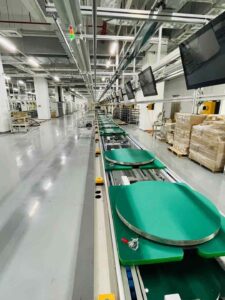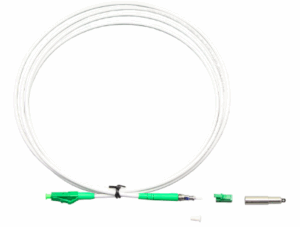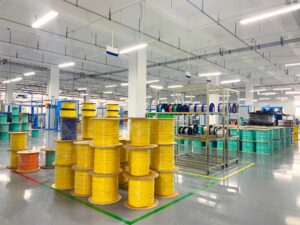In a competitive manufacturing landscape where speed, precision, and consistency define success, optimizing the production process is no longer optional—it’s essential. Among the tools proven to streamline operations and reduce labor bottlenecks, assembly conveyors stand out as a key component. These systems enable businesses to enhance workflow continuity, minimize downtime, and ensure consistent quality across production batches. But how exactly can manufacturers make the most of assembly conveyors to improve production efficiency?
Table of Contents
ToggleUnderstanding the Role of Assembly Conveyors in Modern Production
Assembly conveyors are mechanical handling systems that transport materials, components, or assembled products between different workstations. Commonly used in automotive, electronics, consumer goods, and packaging industries, these systems help automate material movement and support a structured assembly line model.
By eliminating the need for manual transport and reducing idle time between production stages, assembly conveyors support lean manufacturing principles and create a seamless flow from raw material input to final product output.
Benefits of Using Assembly Conveyors in Manufacturing
The right assembly conveyors bring measurable improvements in efficiency and operational control. Here are some of the most significant advantages:
-
Reduced Manual Labor: By automating part movement, workers can focus on specialized tasks rather than material transport, improving task focus and output quality.
-
Increased Throughput: Conveyors enable a continuous flow of production, significantly boosting units produced per hour or shift.
-
Lower Error Rates: With controlled movement and positioning, assembly errors due to mishandling or misplacement are reduced.
-
Consistent Workflow: Materials arrive at the right place, at the right time, ensuring each station operates without unnecessary delays.
-
Adaptability: Modular conveyor systems can be tailored to suit different product types and line configurations.
How to Improve Efficiency with Assembly Conveyors: Key Strategies
To unlock the full potential of assembly conveyors, manufacturers need more than just hardware—they need an optimized integration strategy. Here’s how to do it effectively:
1. Choose the Right Conveyor Type for Your Process
Different products and production environments require different types of assembly conveyors. Key options include:
-
Belt conveyors for lightweight items and smooth product movement
-
Chain conveyors for heavy-duty components or high-friction environments
-
Roller conveyors for easier manual interaction and accumulation
-
Overhead conveyors to free up valuable floor space
Selecting the appropriate conveyor type is fundamental to minimizing wear, reducing jams, and ensuring optimal speed.
2. Design a Logical Workstation Layout
An efficient production line begins with an intelligent layout. Positioning each station based on task sequence and ergonomics can reduce unnecessary movement and handling time. Well-planned assembly conveyors align with the flow of operations and make transitions between stations faster and more reliable.
3. Integrate with Automated Systems
Incorporating assembly conveyors into a larger automated ecosystem—such as robotic arms, pick-and-place machines, or vision systems—can further enhance speed and precision. This reduces reliance on manual intervention and allows real-time process adjustments, contributing to higher production stability.
Smart Maintenance Practices for Assembly Conveyors
Efficiency doesn’t end with setup. To maintain peak performance, businesses should implement regular maintenance and monitoring practices:
-
Routine inspection of belts, chains, and rollers to identify wear or misalignment early
-
Scheduled lubrication and cleaning to avoid friction-based failures
-
Sensor calibration for conveyors integrated with smart controls
-
Training for line operators to handle minor adjustments or reset functions
By proactively managing equipment health, downtime can be minimized and production efficiency remains high.
Optimizing Assembly Conveyors with Real-Time Data
Many modern assembly conveyors are equipped with smart sensors or IoT modules that collect and transmit operational data. Analyzing this data helps identify:
-
Bottlenecks in production flow
-
Inconsistent speed or motor loads
-
Error frequency at specific stations
-
Areas where manual handling is still causing inefficiencies
Leveraging these insights enables informed decision-making, such as rescheduling maintenance, reallocating labor, or redesigning workstation tasks. The goal is to ensure that the entire line works as one coordinated system rather than a series of disjointed processes.
Common Mistakes to Avoid When Using Assembly Conveyors
Even the most advanced systems can fall short if misapplied. Avoid these common pitfalls to maximize your conveyor’s efficiency:
-
Overloading the system beyond its rated capacity, leading to frequent breakdowns
-
Improper station spacing, which can cause backups or underutilized segments
-
Neglecting maintenance, resulting in unplanned downtime
-
Choosing the wrong conveyor type for the materials being handled
Avoiding these issues ensures that your assembly conveyors contribute positively to the entire production ecosystem.
Why Assembly Conveyors Are a Long-Term Investment
When viewed solely as a tool for transport, the value of assembly conveyors may seem limited. However, their real power lies in their ability to bring structure, repeatability, and speed to manufacturing. Over time, this translates into reduced labor costs, improved product quality, and faster response to market demands.
With increasing emphasis on operational agility, many manufacturers are turning to flexible and scalable conveyor systems. Whether introducing new product lines or expanding production, modern assembly conveyors adapt to change without major reconfiguration—making them a solid investment for long-term growth.
Final Thoughts
Boosting production efficiency is not about working harder—it’s about working smarter. By integrating well-designed assembly conveyors into your manufacturing process, you enable streamlined operations, reduce waste, and improve overall throughput. From smart layout design and automation integration to predictive maintenance and data analysis, each layer of optimization contributes to sustained efficiency.
If your goal is to stay competitive in an era defined by speed and precision, assembly conveyors are no longer optional—they’re essential.




